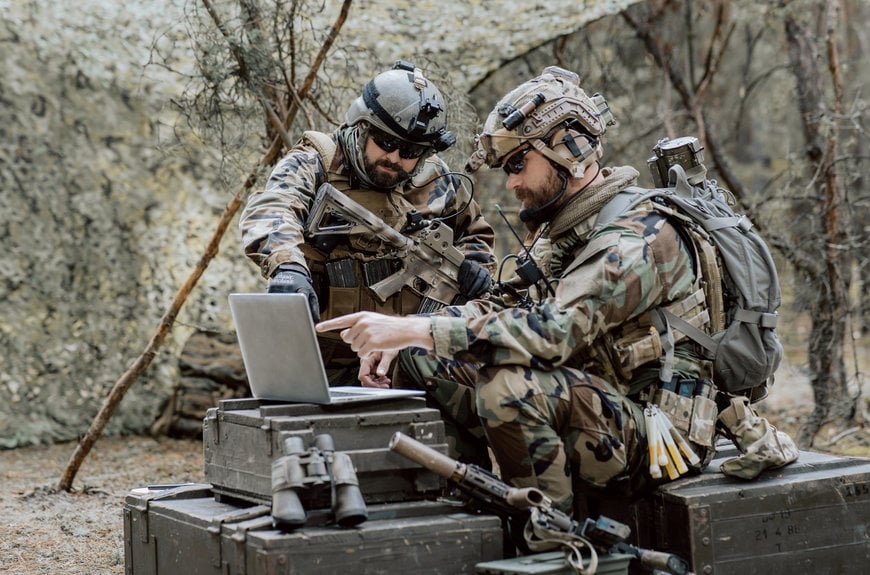www.industryemea.com
01
'23
Written on Modified on
The role of connectors in the Internet of Military Things
By Alex Raymond, Product Manager at connector specialist PEI-Genesis, sheds light on the crucial role that connectors play in IoMT development.

The Internet of Things (IoT) has brought about transformative changes across industries, from healthcare to transportation, reshaping our interactions with the world. In the sphere of defence and security, the emergence of the Internet of Military Things (IoMT) has proven to be a game-changer, promising to enhance military capabilities, boost efficiency, and fortify national security.
IoMT refers to the interconnected network of military devices, equipment and systems that leverage IoT technologies to enhance military capabilities. It involves the integration of sensors, communication devices and data analytics to enable real-time monitoring, analysis and decision-making in military operations.
While the precise market size of IoMT is challenging to estimate due to the sensitive nature of the information, a 2022 report by GlobalData estimated the market's value at $486 billion in 2020, with a projected growth to $807 billion by 2025. This underscores the significance of innovative technologies in streamlining military operations.
Connectors serve as the physical links that unite various components in the IoMT ecosystem, facilitating seamless data exchange and communication. They are instrumental in IoMT implementation, playing a vital role in the overall performance of the system.
Soldier wearables
A prominent facet of IoMT is the development of innovative soldier wearables. According to a research by ReportLinker, the military wearables market is expected to reach $5,608.81 million by the end of 2023, with the potential to double in worth by 2030. Programs like the US Army's "Nett Warrior" detail systems for developing the "future soldier," ensuring that every piece of equipment, down to the smallest connector, is designed to enhance tactical capabilities.
The integration of wearable devices for monitoring vital signs, fatigue levels, and soldier locations contributes to improved health management and operational planning. Additionally, head-mounted Command and Control (C2) displays equipped with augmented reality, such as Microsoft's Integrated Visual Augmentation System (IVAS) headset, are gaining popularity in IoMT.
Biometric sensors are another essential component of future soldier wearables. These sensors offer real-time monitoring of a soldier's vital signs and physiological data, including heart rate, hydration levels, body temperature, and other critical parameters. Connector types commonly used in these applications include magnetic and push-pull options for quick and easy mating, USB-C, micro-USB, and HDMI connectors for power, video, and data transfer.
Robust data transfer
Military operations often take place in challenging environments characterised by extreme conditions. Connectors designed for IoMT must withstand harsh temperatures, vibrations, and exposure to water, dust, and various contaminants. A reliable and rugged connector ensures uninterrupted data transmission between sensors, devices, and control centres, enabling real-time situational awareness and rapid decision-making.
To guarantee the reliable acquisition and transmission of data, circular connectors are typically employed. Connectors such as MIL-DTL-38999, MIL-DTL-26482, and military-grade RJ45 solutions are used for their robustness, reliability, and resistance to harsh environmental conditions.
Interoperability
IoMT is marked by a diverse array of interconnected devices that may originate from different manufacturers, nations, or military branches. Standardised electronic connectors promote interoperability between numerous military assets, facilitating seamless integration and cooperation across the battlefield. Specific military standards, such as MIL-SPEC, MIL-DTL-38999, MIL-DTL-26482, MIL-DTL-5015, and MIL-DTL-26500, dictate the requirements that connectors must adhere to in order to perform effectively in harsh environmental conditions.
Numerous other standards exist, covering different aspects of military equipment, such as the Generic Open Soldier System Reference Architecture (GOSSRA), German VG standards, and NATO Standardization Agreement (STANAG). These standards establish a common set of technical requirements that ensure interoperability and compatibility in joint military operations.
To enhance IoT equipment connectivity, middleware platforms and standardised Application Programming Interfaces (APIs), along with Message Queuing Telemetry Transport (MQTT), are used to facilitate communication and data exchange between diverse devices and systems.
IoMT signifies a paradigm shift in defence and security, empowering armed forces to harness the power of IoT technologies for improved situational awareness, decision-making, and streamlined operations. Connectors stand as essential components that support efficient communication, data exchange, and decision-making processes across a variety of military applications.
PEI-Genesis offers a wide range of rugged and reliable interconnect options from top manufacturers that comply with MIL-SPEC standards, covering all aspects of IoMT, from soldier-worn applications to land vehicles, aircraft, and weapon systems. For more information about PEI-Genesis' military-grade connectors, visit website.
www.pei-genesis.com

